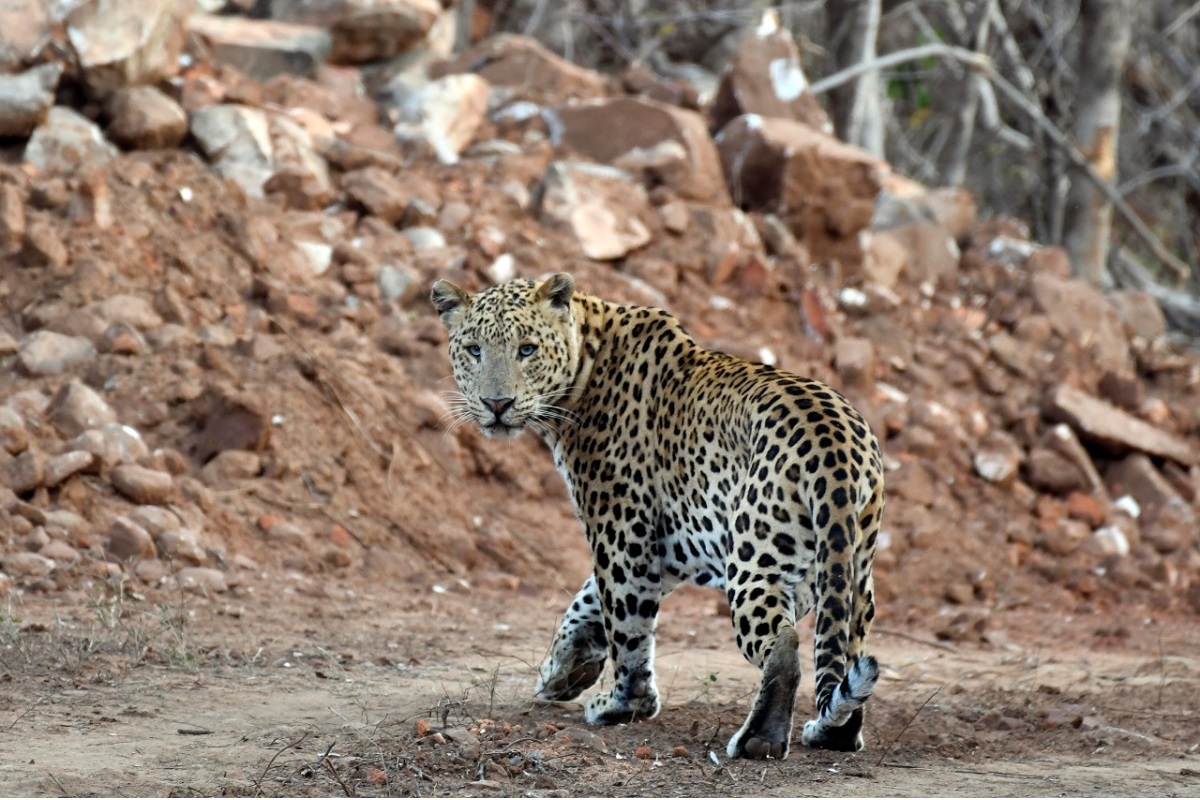Discover Bhumi Pednekar’s Jaipur connection: A journey of memories
Discover Bhumi Pednekar's heartfelt connection to Jaipur as she reminisces about her childhood memories and recent shoot in the Pink City.
Jaipur to be ‘Leopard Capital of World”: Experts.

Representation image (Photo: SNS)
With the opening of ‘Amagarh Leopard Reserve’ on the Aravalli mountain ranges on the outskirt of the state capital here, Jaipur is going to be the “Leopard Capital of World” if declared by the Union and the State Forest & Wildlife Ministries in near future.
In a virtual inaugural function at his office, Chief Minister Ashok Gehlot opened the Amagarh Leopard Reserve for tourism which is spread over 1524 hectares and has 16 leopards (panther), other animals, and 250 kinds of bird species including peacocks, doves, mynas, parakeets, partridges, doves, babblers, mynas, parakeets, robins, woodpeckers, bulbuls, shikra, etc, whereas the migratory birds include pittas, paradise flycatchers, golden orioles, pied cuckoos, Eurasian cuckoos, orient scops owls, pallid scops owls, northern goshawks.
Gehlot said it would boost tourism, and conserve wildlife and flora in the larger areas as the Lalberi reserve forest section is adjoining the Amagarh forest section spread over 112 hectares.
Advertisement
Meanwhile, Sunil Mehta, a Member of the State Board of Wildlife, told SNS that there was no other ‘leopard reserve’ anywhere in the world except Jaipur, which has the highest density of 61 wild leopards (45 at Jhalana Dungari, 16 in Amagarh).
There are at least two more potential forests in Jaipur which are ready to be declared as ‘leopard reserves’, and Jaipur to be the “Leopard Capital of World” if approved by the Union and the State Forest and Wildlife Ministries in the future, Mehta who is also representing the State Expert Panel on Tigers said.
Hema Ram Choudhary, Rajasthan Forest, and Wildlife Minister said the department made efforts in the field of wildlife conservation under the Project Leopard, and as the result after 2017 the number of leopards is increasing at Jhalana Leopard Reserve.
He said, “The number of leopards in 2018 was around 20, which currently is around 38 in Jhalana. In the last three years (January 2019 to August 2021) a total of 35 cubs were born. Currently, there are 22 adults, 6 sub-adults, and 10 cubs in Jhalana. At least 6 leopards born in Jhalana are roaming in Amagarh”.
This forest area is being used as a corridor by leopards and other wildlife to go to other jungles. The jungles of Jhalana are spread over 1978 hectares only, which is limited space for leopards therefore sub-adult leopards in search of habitat are moving towards Amagarh and Lalberi forest areas and in the future too, they will keep moving to these areas. In this way, the number of leopards will increase.
Advertisement